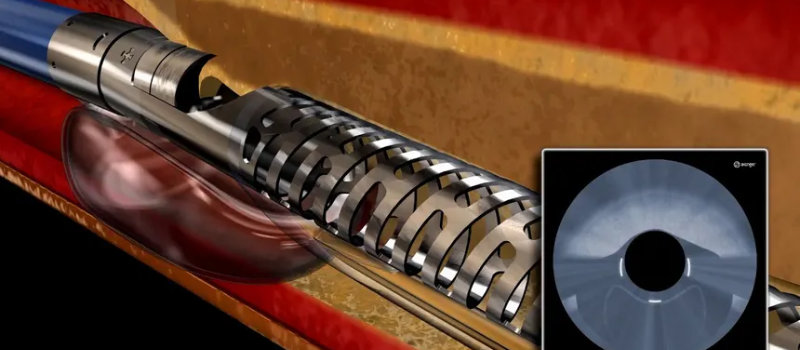Emerging Innovations and Personalized Care Options for 2025
Peripheral Artery Disease (PAD) is a progressive vascular condition marked by reduced blood flow to the lower limbs, resulting in pain, cramping, and chronic wounds that heal slowly. PAD significantly increases the risk of heart attack, stroke, and limb amputation. Fortunately, recent advances in both minimally invasive treatments and biological therapies have transformed how PAD is diagnosed and managed.

The 2024–2025 Multi-Society Guidelines emphasize a personalized, stepwise approach—beginning with risk factor control and exercise, followed by advanced endovascular and surgical procedures when needed. Here’s a comprehensive look at the latest PAD treatments available today.
Endovascular Therapies and Devices
Minimally invasive vascular procedures have become the first-line option for many PAD patients. The most widely used tools include:
Balloon Angioplasty and Drug-Coated Balloons (DCBs)
Balloon angioplasty remains a key method for reopening blocked arteries in the legs. Recent updates to drug-coated balloon (DCB) technology, especially with paclitaxel, have improved safety and outcomes. While clinical trials are still ongoing, DCBs have shown promise in reducing restenosis and promoting faster recovery.
Atherectomy Devices
In cases involving heavy plaque buildup or calcified lesions, atherectomy devices are used to debulk blockages before balloon angioplasty or stenting. These devices are often combined with DCBs to enhance arterial healing.

Modern Stents and Hybrid Techniques
Specialized self-expanding stents and covered stents are used for complex lesions or long occlusions. The right combination of stents and angioplasty depends on the severity of arterial blockage and patient-specific anatomy.
Advanced Cell and Biologic Therapies
For patients with critical limb ischemia (CLI) or non-healing wounds, advanced regenerative therapies are emerging. These include:
Therapeutic Angiogenesis and Cell Therapy
In select trial settings, stem cell therapy and therapeutic angiogenesis are being explored to stimulate new blood vessel growth in ischemic limbs. While still experimental, early-phase clinical trials have shown limb salvage potential in patients who otherwise face amputation.
These therapies are typically available through specialty centers or clinical trials, such as those offered at Washington Vascular Specialists.
Risk Factor Management: The Foundation of PAD Care
While technology is advancing, medical management remains critical. Controlling cardiovascular risk factors helps prevent disease progression and reduce complications:
- Statins lower LDL cholesterol and reduce inflammation
- Antiplatelet medications prevent clotting and promote arterial health
- Blood pressure control improves circulation
- Diabetes management promotes wound healing and limits vascular damage
- Smoking cessation is essential for improved survival
Post-procedure antithrombotic therapy (dual antiplatelet or anticoagulants) is tailored to each patient’s bleeding risk and limb preservation needs. The latest guidelines increasingly emphasize individualized, risk-based decisions.
New Surgical Options for PAD in 2025
Surgical interventions have also seen significant advancements, especially for complex PAD cases that once required open bypass surgery.
Percutaneous Transmural Arterial Bypass (PTAB) with the DETOUR System
This minimally invasive bypass procedure uses a stent graft and the patient’s femoral vein to reroute blood around long occlusions. The DETOUR system enables deep arterial bypass without open surgery, reducing hospital stays and speeding up recovery.
Next-Generation Bioresorbable Stents (BTK Focus)

New bioresorbable scaffolds are being tested for below-the-knee (BTK) PAD. These stents dissolve over time, reducing long-term inflammation and eliminating the need for permanent implants. The Esprit BTK stent by Abbott has shown promising trial results with thinner struts and better vessel healing.
Integrated Multidisciplinary PAD Care
The future of PAD treatment lies in comprehensive, team-based care. Leading vascular clinics now offer:
- Wound care and podiatry
- Endovascular and surgical intervention
- Medication management
- Physical rehabilitation
- Nutrition and lifestyle counseling
At Washington Vascular Specialists, we are proud to deliver this holistic model of care, helping patients reduce amputation risk, heal faster, and regain mobility.

Take the Next Step in PAD Care
Where you receive care for PAD matters. At Washington Vascular Specialists, our experts deliver cutting-edge treatments and compassionate support every step of the way. From angioplasty and atherectomy to regenerative therapies and risk factor management, we offer a full spectrum of care under one roof.
Call 301-891-2500 or schedule your appointment online today and take control of your vascular health.



